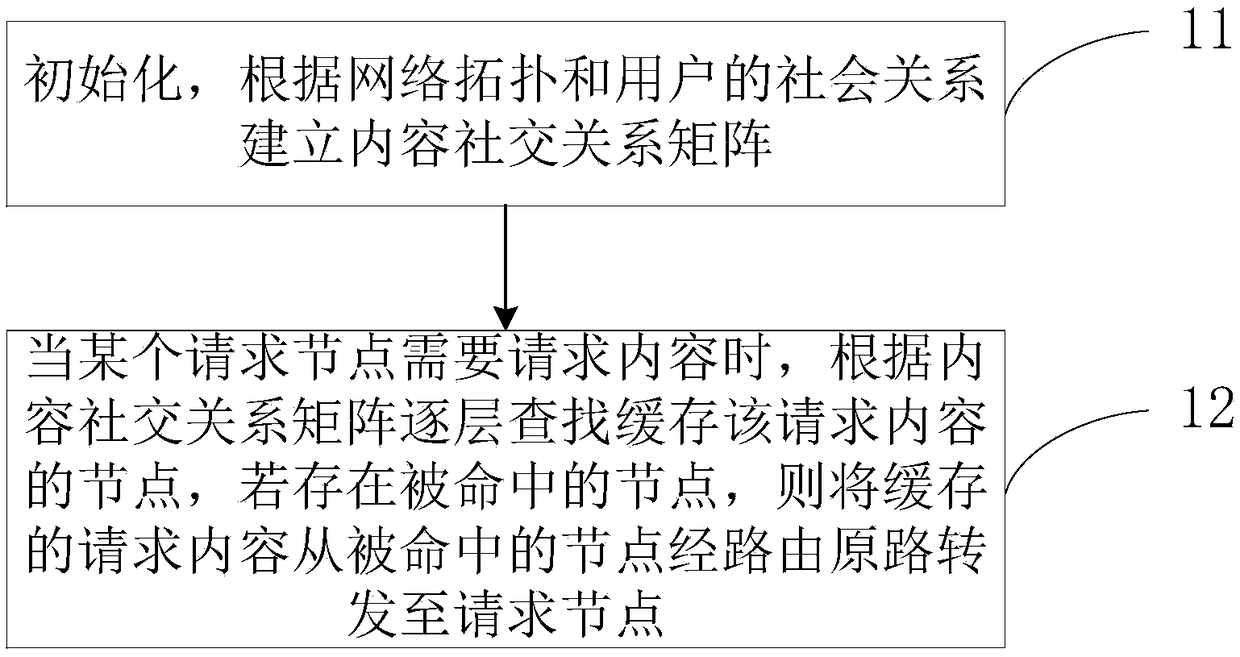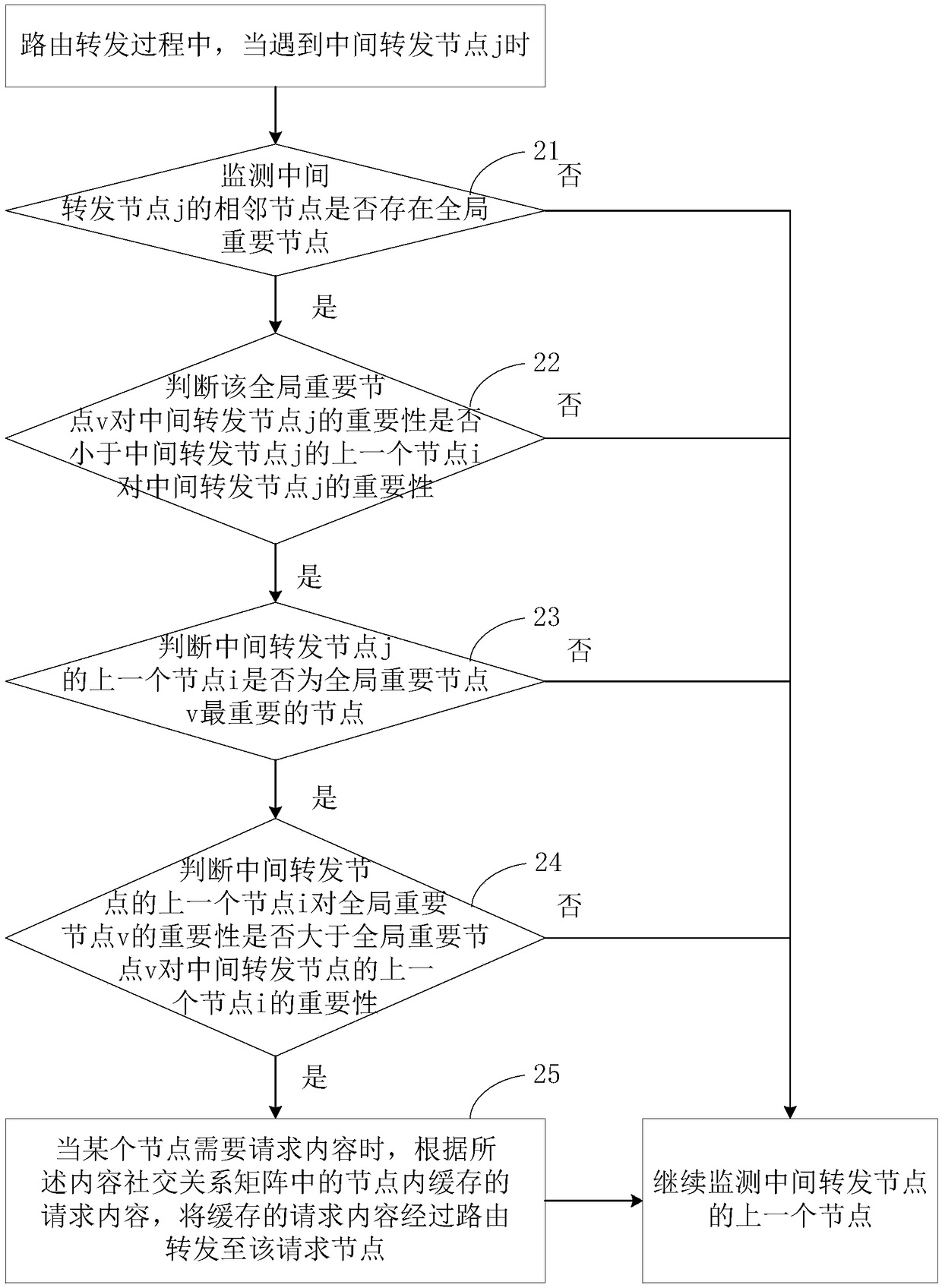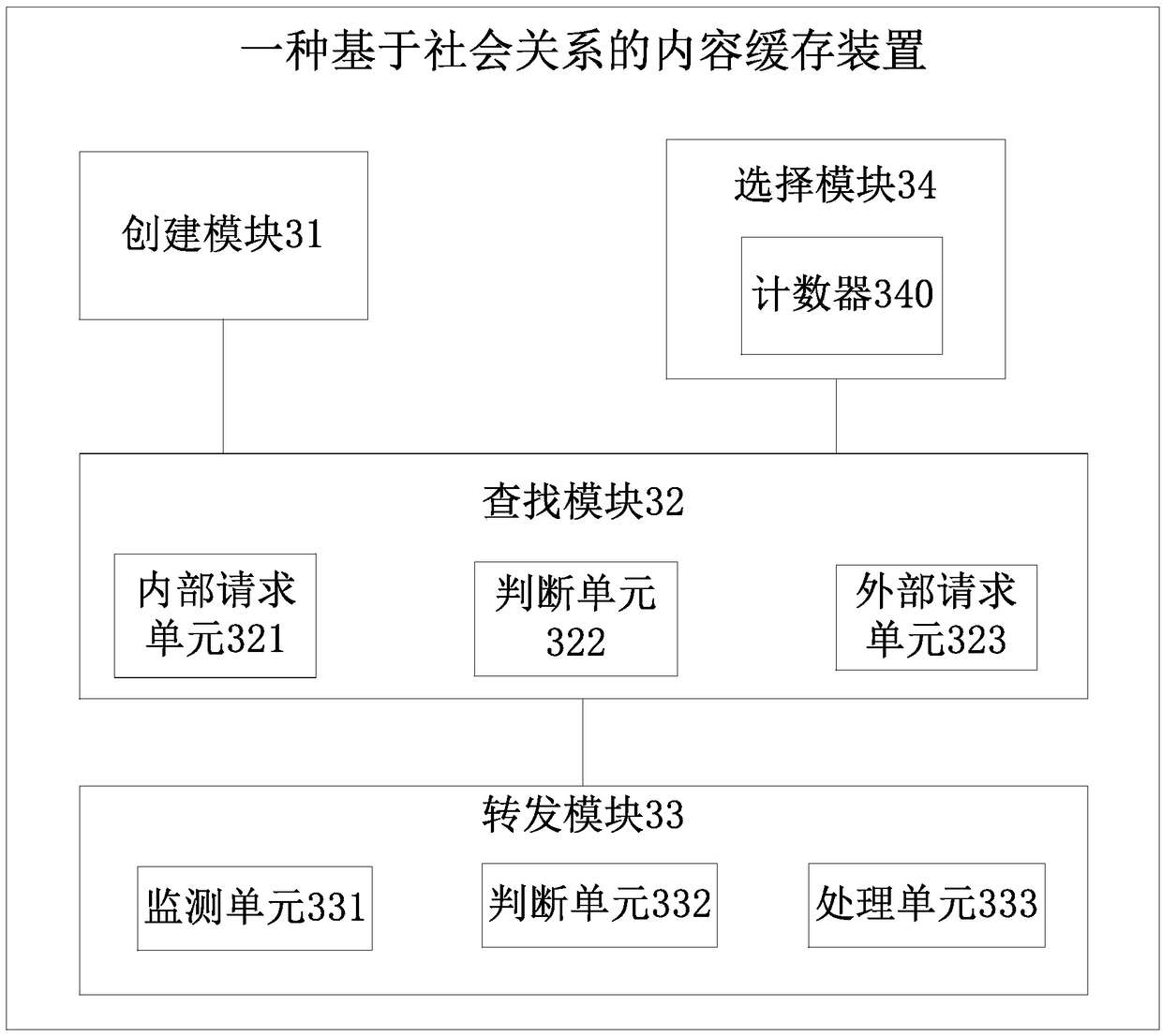Content caching method based on social relationship
A technology of content caching and social relationship, applied in the field of content caching based on social relationship, can solve the problem of heavy burden on important nodes and achieve the effect of improving efficiency
- Summary
- Abstract
- Description
- Claims
- Application Information
AI Technical Summary
Problems solved by technology
Method used
Image
Examples
Embodiment 1
[0036] Embodiment 1 of the present invention provides a content caching method based on social relations, such as figure 1 shown, including:
[0037] Step 11: Initialize, establish a content social relationship matrix according to the network topology and the user's social relationship;
[0038] Exemplarily, assuming that there are m nodes in the entire network, the initially established content social relationship matrix is:
[0039]
[0040] Among them, the matrix changes dynamically with the change of social relations, U c is the content social relationship matrix, and the cache for content c (that is, the Interest package) is determined by this matrix; u ij Indicates the relative importance of nodes, i.e. the importance of i to j, I i Indicates the importance of the node itself of node i, and the importance of node i itself is determined by the social relationship of the node.
[0041] Step 12: When a request node needs to request content, search for the node that c...
Embodiment 2
[0047] Embodiment 2 of the present invention is a preferred embodiment of the present invention, specifically including:
[0048] In this embodiment, the network controller maintains the content social relationship matrix, sorts the nodes according to their own importance from high to low in advance, and selects a preset number of nodes (for convenience of description, the preset number is defined as L here) as nodes. global important nodes;
[0049] The value of L is determined according to the importance of the content β and the total number of nodes in the entire network m, that is, L=β*m, and the value of L is adjusted according to the needs of network users for content.
[0050] During routing and forwarding, when a globally important node is encountered, a copy of the request content is kept in the cache space of the globally important node;
[0051] Preferably, a counter is maintained in the network to record the number of copies reserved, and after each copy is reserv...
Embodiment 3
[0064] Embodiment 3 of the present invention describes the characteristics of nodes in detail, including:
[0065] Node characteristics include node betweenness, node self-importance and node relative importance;
[0066] Node betweenness: if the shortest path (distance) between a pair of nodes has g jk bar with g jk (i) item passes through node i, then the contribution of node i to this pair of nodes is g jk (i) / g jk , add up the contribution of node i to all node pairs and divide by the total number of node pairs, you can get the betweenness B of node i i ,Right now
[0067]
[0068] Node self-importance: Indicates the comprehensive importance of node i in the entire network for content c; according to the node betweenness and the user's own interest preference, the user's own importance I of content c is calculated i ,Specifically:
[0069] I i =B i ψ(i,c)
[0070] I i The larger the value of , the more preferred the node i is to the content c, and the stronger...
PUM
 Login to View More
Login to View More Abstract
Description
Claims
Application Information
 Login to View More
Login to View More - R&D
- Intellectual Property
- Life Sciences
- Materials
- Tech Scout
- Unparalleled Data Quality
- Higher Quality Content
- 60% Fewer Hallucinations
Browse by: Latest US Patents, China's latest patents, Technical Efficacy Thesaurus, Application Domain, Technology Topic, Popular Technical Reports.
© 2025 PatSnap. All rights reserved.Legal|Privacy policy|Modern Slavery Act Transparency Statement|Sitemap|About US| Contact US: help@patsnap.com



